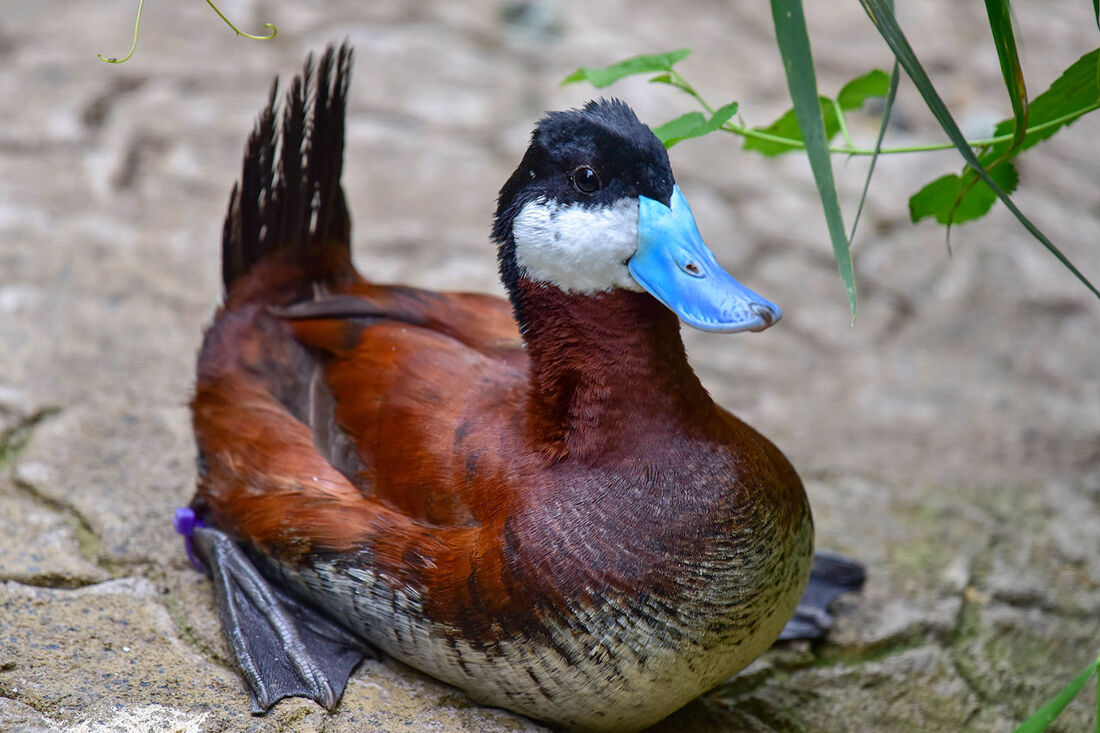November 2020 - the Ruddy Duck
|
The Ruddy Duck is a compact duck with a stiff tail that is often held upright out of the water. The male ducks have all the color; females are “brownish”. The males, in summer, have a light blue scoop-shaped bill, chestnut bodies, a black cap on the top of the head with white cheeks. Come winter, the males turn dullish brown like the females.
Ruddy ducks are about 13-17 inches long, weigh between 10 and 30 ounces, with a wingspan of 22-24 inches. Meal time mostly happens at night when they dive and feed on aquatic invertebrates like midge larvae. A few aquatic plants and seeds round out the diet. They dive to the bottom of a shallow pond, strain mud through thin plates on their bills to capture prey. During the day, they snooze with their head tucked under a wing, and their tail cocked upwards. They are in our area mostly year-round but more common in winter, and near our rivers, ponds and lakes. A short-distant migrant traveling at night, birds may move to the coast for breeding. Courtship display by the male includes sticking that stiff tail in the air and striking their bill against their inflated chest to release air bubbles as water is forced from their feathers. And then they belch! The males may also run across the water to make popping sounds with their feet. Nests are placed in cattails and grasses from 2 to 10 inches above the water. The nest needs to be well supported and hidden by vegetation. This starts as a platform and slowly is built into a bowl-like nest made with dry plants materials or sometimes fresh, green vegetation and finished off with a canopy of vegetation over the nest. The clutch varies from 3-13 eggs which incubate for 20-26 days. Ducklings require little care from the mother and none from the father. Ducklings leave the nest just a day after hatching, and can swim and dive well. Ruddy ducks spend most of their time in the water, swimming and diving when necessary to avoid predators. Though they fly fast, after running across the water to get airborne, they are not very maneuverable. These are prey for red-tail hawks, great horned owls, minks, raccoons and red foxes. The genus for the ruddy duck, Oxyura jamaicensis, comes from Ancient Greek oxus meaning “sharp” and oura meaning “tail”. The jamaicensis means “from Jamaica”. This is the only stiff-tailed duck in North America. Tri County Wildlife Care, a local nonprofit started in 1994, is dedicated to the rescue and rehabilitation of our native wildlife and helping our community live in balance with wildlife. They envision a world where wildlife and people thrive together. For more information call (209) 283-3245, or visit pawspartners.org. |
Learn More!
|


